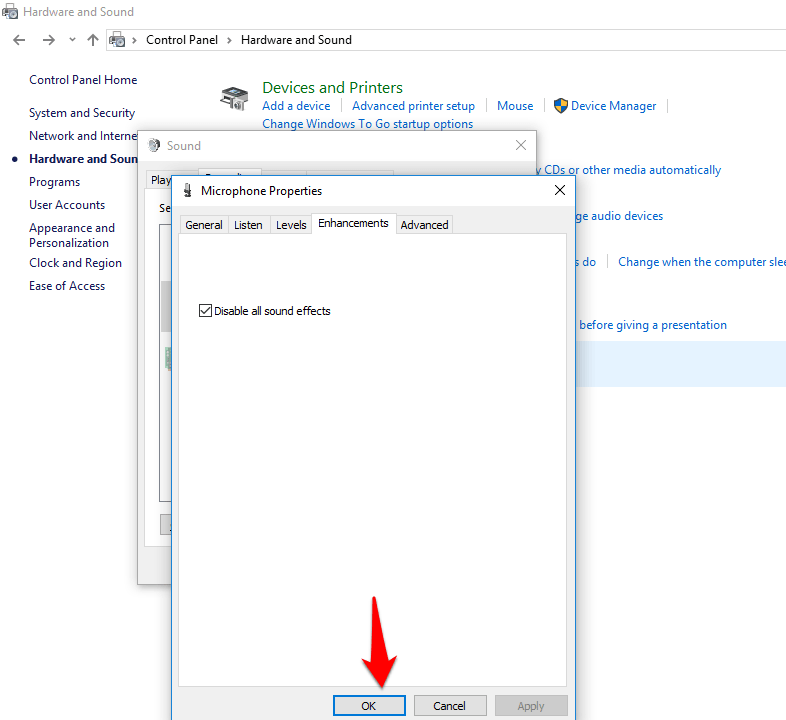In today’s digital age, the ability to communicate effectively through virtual channels has become paramount. Whether you’re a seasoned podcaster, a remote worker engaged in video conferencing, or simply an avid gamer connecting with friends online, having a microphone that accurately captures your voice without any unwanted background intrusions is essential. However, contending with noisy environments and intrusive sounds can often compromise the clarity and professionalism of your audio recordings and transmissions.
![How to Reduce Background Noise on Mic [Ultimate Guide] - MiniTool ...](https://www.partitionwizard.com/images/uploads/articles/2021/05/how-to-reduce-background-noise-on-mic/how-to-reduce-background-noise-on-mic-4.png)
Image: www.partitionwizard.com
Fear not, for in this comprehensive guide, we’ll delve into a myriad of effective strategies to combat background noise, ensuring your voice takes center stage and commands the attention it deserves. Join us as we explore innovative software solutions, delve into microphone placement techniques, and uncover simple yet impactful environmental adjustments that will drastically enhance the quality of your microphone recordings, empowering you to make a lasting impact in the digital realm.
Understanding the Nature of Background Noise
Before embarking on our noise-busting journey, it’s essential to grasp the various sources of background noise and their impact on your recordings. Background noise can manifest in diverse forms, from the monotonous hum of air conditioners to the cacophony of construction work outside. These unwanted sounds can be categorized into two primary types:
-
Steady-state noise: As the name suggests, this type of noise maintains a relatively constant level throughout your recordings, such as the persistent whirring of a computer fan or the ambient hum of traffic.
-
Intermittent noise: This more disruptive form of noise is characterized by unpredictable and sporadic occurrences, such as the sudden barking of a dog or the clattering of dishes in the kitchen.
Identifying the nature and sources of background noise in your environment will significantly inform your choice of noise reduction techniques, ensuring you can tailor your approach for maximum effectiveness.
Harnessing the Power of Software Solutions
The digital realm offers an array of software solutions specifically designed to combat background noise, empowering you to filter out unwanted sounds and enhance the clarity of your recordings. These software tools leverage sophisticated algorithms to analyze your audio input, intelligently distinguishing between your voice and background noise, and subsequently suppressing the latter without compromising the integrity of your speech.
-
Noise-canceling microphones: These dedicated microphones incorporate built-in noise-canceling technology, utilizing multiple microphones to capture your voice while simultaneously attenuating background noise. Their compact design makes them ideal for podcasters, vloggers, and anyone seeking exceptional audio quality on the go.
-
Noise-reduction software: Standalone noise-reduction software applications can be seamlessly integrated with your existing microphone setup, providing real-time noise reduction capabilities. These software tools offer granular control over noise reduction parameters, allowing you to fine-tune the level of noise suppression to suit your specific needs.
-
Audio editing software: Many audio editing software programs incorporate noise reduction features, enabling you to retrospectively remove background noise from previously recorded audio. This post-production approach provides flexibility and allows for precise noise reduction adjustments, making it a valuable tool for refining the quality of existing audio content.
Mastering Microphone Placement Techniques
The strategic placement of your microphone can significantly impact the amount of background noise captured in your recordings. By carefully considering the position and orientation of your microphone, you can effectively minimize noise intrusion and enhance the clarity of your voice.
-
Positioning your microphone: The optimal placement for your microphone will vary depending on the type of microphone you’re using and the environment you’re recording in. As a general rule, position your microphone close to your mouth, approximately 6 to 12 inches away, to ensure your voice is captured clearly while minimizing room ambiance and background noise.
-
Directional microphones: Directional microphones, such as cardioid and shotgun microphones, are designed to focus their sensitivity in a specific direction, effectively reducing noise from other directions. Utilizing a directional microphone can significantly enhance the signal-to-noise ratio of your recordings, isolating your voice from unwanted background sounds.
-
Microphone isolation: Employing a microphone isolation shield or shock mount can further minimize background noise by physically isolating your microphone from vibrations and other noise-inducing factors. These accessories create a physical barrier between your microphone and its surroundings, effectively dampening unwanted noise and enhancing the overall clarity of your recordings.

Image: www.techtricksworld.com
How To Fix Background Noise On Mic
Environmental Adjustments for Noise Reduction
In addition to software solutions and microphone placement techniques, there are several simple yet effective environmental adjustments you can make to reduce background noise and improve the quality of your microphone recordings:
-
Choose a quiet recording environment: If possible, select a quiet room or space for your recordings,远离noisy appliances, traffic, or other potential sources of background noise.
-
Treat your recording space: Acoustic treatment of your recording environment can dramatically reduce reverberation and unwanted reflections, creating a more controlled acoustic space. Consider using sound-absorbing materials such as acoustic panels or curtains to minimize noise reflections and enhance the clarity of your recordings.
-
Minimize external noise: Identify and address external sources of noise that may intrude on your recordings. Close windows, turn off noisy appliances, and request that others in your household maintain a quieter environment during your recording sessions.
By implementing these strategies, you can effectively combat background noise, ensuring your voice is heard loud and clear. Embrace the power of software solutions, master microphone placement techniques, and make simple yet impactful environmental adjustments to elevate the quality of your microphone recordings and make a lasting impact in the digital realm.